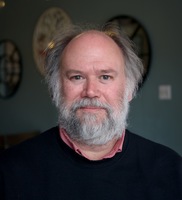Home
Publications
Data
Classes
EOS Home Page
Earth Sciences
James (Jamie) Pringle
Professor I graduated in 1990 from Dartmouth College
with a BA in physics and from the Massachusetts
Institute of Technology and Woods Hole Oceanographic
Institution Joint program with a doctorate in
Physical Oceanography. I was then a post-doctoral
fellow at the Marine Life Research Group at the
Scripps Institution of Oceanography. I am now an
professor at the University of New
Hampshire.
EZfate: a toolkit for predicting global coastal Lagrangian pathways in R
Chapman and Malanotte-Rizzoli's Notes based on Myrl
Hendershott's waves course:
Linear Wave Movies -- Coastal, open-ocean and equitoreal
Rossby and Kelvin waves:
Morse Hall

My current research includes
The statistics of dispersal of particles that drift with the current,
such as planktonic larvae, in the global coastal model varies greatly
in space and time. Based on the Mercator Ocean 1/12th of a degree
global circulation model, I have created a tool that provides
estimates of Lagrangian dispersal globally for 2007 to the last
calendar year for durations of up to 60 days. The code to access and
process this data is written in R, and I can provide access to the
data product for those working in python. The code and a
description can be found at
https://github.com/JamiePringle/EZfate .
Many oceanographic students have learned about waves from this
excellent set of notes prepared by Dave Chapman and
Paola Malanotte-Rizzoli from a course originally
given by Myrl Hendershott. They have been passed from
hand to hand, and xeroxed many times. You may now
find them
here .
I used Francois Primeau's linear shallow water model to model the
evolution of a motionless mound of water that is
allowed to evolve either in the middle or eastern
edge of a closed beta-plane basin. In class, I
motivate this with an aquarium and a mound of water
generated by an inverted UNH shot glass which, if you
have used it enough, appears to have a roughly
Gaussian inner profile. Runs are also made on an
equatorial beta-plane to illustrate how equatorial
Kelvin and Rossby waves interact. In these runs, the
initial disturbance is always in the center of the
domain. You are welcome to use these animations or
movies in your teaching.
The movies, and more explanation, are here .
Univ. of New Hampshire
39 College Road
Durham, NH 03824-3525
603-862-5000
Fax: 603-862-0243
![]()
![]()
